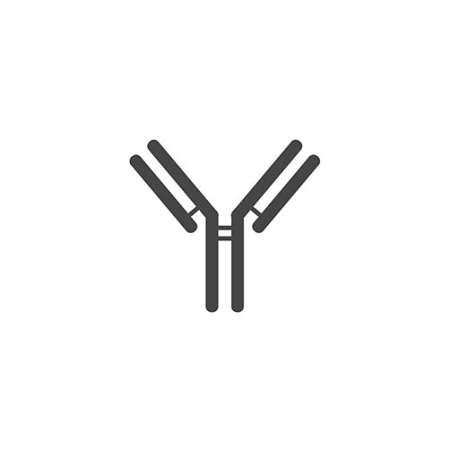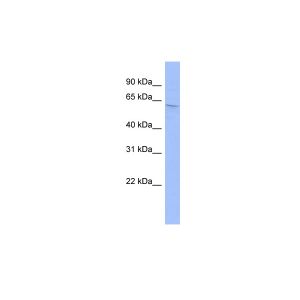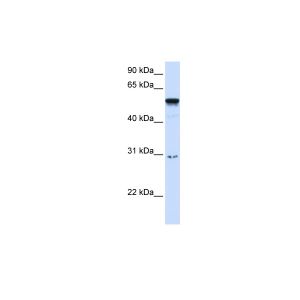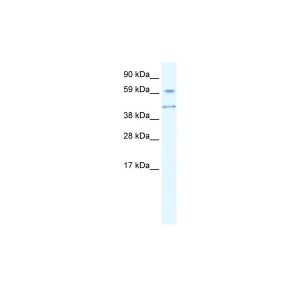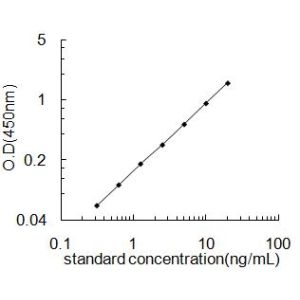AIRE Antibody - N-terminal region : Biotin
Katalog-Nummer ARP32650_P050-Biotin
Size : 100ul
Marke : Aviva Systems Biology
| Datasheets/Manuals | Printable datasheet for anti-AIRE (ARP32650_P050-Biotin) antibody |
|---|
| Predicted Species Reactivity | Human, Mouse, Rat, Cow, Dog, Guinea Pig, Horse |
|---|---|
| Product Format | Liquid. Purified antibody supplied in 1x PBS buffer. |
| Clonality | Polyclonal |
| Host | Rabbit |
| Conjugation | Biotin |
| Application | IHC, WB |
| Reconstitution and Storage | All conjugated antibodies should be stored in light-protected vials or covered with a light protecting material (i.e. aluminum foil). Conjugated antibodies are stable for at least 12 months at 4C. If longer storage is desired (24 months), conjugates may be diluted with up to 50% glycerol and stored at -20C to -80C. Freezing and thawing conjugated antibodies will compromise enzyme activity as well as antibody binding. |
| Immunogen | The immunogen is a synthetic peptide directed towards the N terminal region of human AIRE |
| Purification | Affinity Purified |
| Predicted Homology Based on Immunogen Sequence | Cow: 92%; Dog: 100%; Guinea Pig: 100%; Horse: 100%; Human: 100%; Mouse: 100%; Rat: 100% |
| Peptide Sequence | Synthetic peptide located within the following region: HRTEIAVAVDSAFPLLHALADHDVVPEDKFQETLHLKEKEGCPQAFHALL |
| Concentration | 0.5 mg/ml |
| Blocking Peptide | For anti-AIRE (ARP32650_P050-Biotin) antibody is Catalog # AAP32650 (Previous Catalog # AAPP03660) |
| Reference | Akiyoshi,H., et al., (2004) J. Biol. Chem. 279 (32), 33984-33991 |
|---|---|
| Gene Symbol | AIRE |
| Gene Full Name | Autoimmune regulator |
| Alias Symbols | APS1, APSI, PGA1, AIRE1, APECED |
| NCBI Gene Id | 326 |
| Protein Name | Autoimmune regulator |
| Description of Target | The function of the protein encoded by the AIRE gene is not well defined. However it contains zinc finger motifs suggestive of a transcription factor. The protein (isoform 1) is localized to both the nucleus and cytoplasm. Defects in this gene cause the autosomal-recessive systemic autoimmune disease termed autoimmune polyendocrinopathy-candidiasis-ectodermal dystrophy (APECED).This gene encodes a transcriptional regulator that forms nuclear bodies and interacts with the transcriptional coactivator CBP. At least three splice variant mRNAs products have been described including one which results in a premature stop codon and a transcript predicted to be a candidate for nuclear-mediated decay (NMD). Defects in this gene cause the rare autosomal-recessive systemic autoimmune disease termed autoimmune polyendocrinopathy-candidiasis-ectodermal dystrophy (APECED). |
| Uniprot ID | O43918 |
| Protein Accession # | NP_000374 |
| Nucleotide Accession # | NM_000383 |
| Protein Size (# AA) | 545 |
| Molecular Weight | 58kDa |
| Protein Interactions | TUBB; RAVER1; TUBA1C; TMPRSS13; CCDC87; FAT1; GIGYF2; SRRM2; TUBB4B; EIF4EBP3; UBB; HSP90AB1; HSPA8; HSPA5; HSPA1L; HSPA1A; ATP4A; HIST3H3; HDAC2; HDAC1; DAXX; AIRE; UBAC1; HIST1H3A; HIST2H2BE; HSPA4; SRSF1; SMC1A; XPO1; TOP2A; SSRP1; SNRPD3; SNRPB; SRSF3 |




